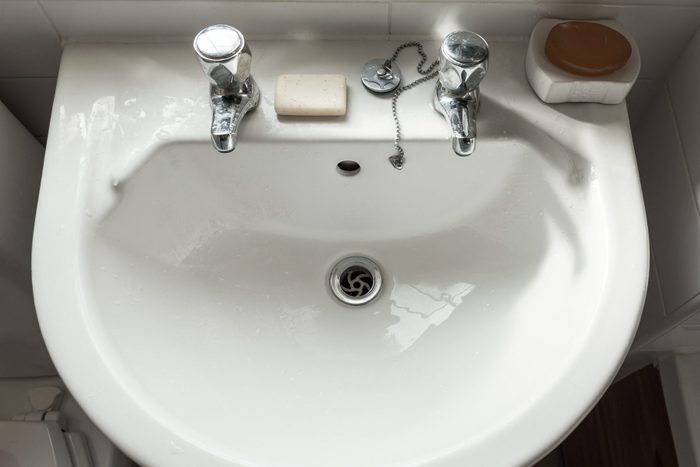Homeowner’s Guide To Bathroom Sink Dimensions and Sizes
Updated: Feb. 07, 2024

No two bathrooms are the same, especially when you're remodeling. So choosing the right size bathroom sink is vital.
Whoever coined the phrase, “They don’t build ’em like they used to,” didn’t have my cheaply-built tract home from the 1970s in mind. It seems everything in it was designed to fail, so I’ve spent my decade-plus in this home fixing things regularly.
I’ve worked in the plumbing and home improvement industries for a couple of decades, so I’ve seen the impact quality materials and components have on reliability, ease of use and resale values. I’ve been planning a complete bathroom remodel that includes a sink replacement. So choosing the right size and type of sink has been on my mind.
Sink manufacturers offer multiple bathroom sizes, so if you have a standard-size bathroom, it’s usually easy to find a sink to fit. But what if your bathroom isn’t a standard size? What if it’s nestled into a space that used to be a closet, or needs a super-long countertop to serve a large family?
The answer, of course, is yes, you can find odd-sized sinks as well. There are practical limitations on depth, and sink width is often constrained by countertop width or code-required bathroom clearances. Length is limited only by the size of the countertop and the design of the vanity.
On This Page
Common Bathroom Sink Sizes
Below are the most common sizes for top-mount and undermount sinks.
Rectangular and oval
Small: From 15 to 20 inches long and nine to 12 inches wide, with a depth between 5-3/4-in. and seven inches.
Medium: From 20 to 30 inches long, 19 to 24 inches wide and about seven inches deep.
Large: From 30 to 50 inches long, 19 to 24 inches wide and about five inches deep. It’s difficult to fit these larger “trough-style” sinks on a standard countertop; they work best as wall mounts.
Round
Small: From seven to 10 inches in diameter.
Medium: From 11 to 15 inches in diameter.
Large: From 16 to 20 inches in diameter.
Depth typically varies from five to eight inches for round sinks.
Pedestal
Pedestal sinks are typically between 22 and 28 inches long, though they can range from 15-1/2-in. to more than 30 inches. The width usually ranges from 17 to 20 inches.
Wall-mount
Although these sinks can be really long, they’re typically 16 to 23 inches long, 15 to 18 inches wide and five to eight inches deep. Wall-mounts are space-savers by design, so it’s possible to find ones less than 10 inches long to fit into a tiny bathroom.
Vessel
Because they sit on top of the counter, vessel sinks can have wider openings than top-mounts or undermounts. They can be deep, too, as long as the countertop is low enough to keep the rim at a usable height.
Typical dimensions for round vessel sinks run 14 to 20 inches in diameter and four to seven inches deep. Rectangular and square ones tend to be shallower, from 15 to 25 inches long and 16 to 20 inches wide.
Choosing The Right Sink Size For You
When measuring the space you’ll need for your sink, remember to allow for a faucet. You’ll need at least two inches from the back of the sink to the back wall. Also ensure you leave 30 inches from the centerline of the sink to the centerline of any adjacent fixture, like the toilet, and at least 21 inches from the front of the sink to the facing wall per plumbing code.
As always, refer to your local municipality to ensure compliance with code.
FAQs
Are all bathroom sinks the same height?
No. While most bathroom sinks are installed at 32 inches to the top, many people find up to 36 inches more comfortable. Children might struggle with that height, however, so be sure to provide a small stool for kids to reach.
Must the P-trap be directly below the drain?
In most cases, yes. This ensures proper drain flow and trapping of sewer gases. Plumbing codes sometimes allow for combination traps — i.e a single trap for multiple sinks — but that’s only in limited cases. Consult with your local plumbing inspector.
Should a bathroom sink be level?
Absolutely.
